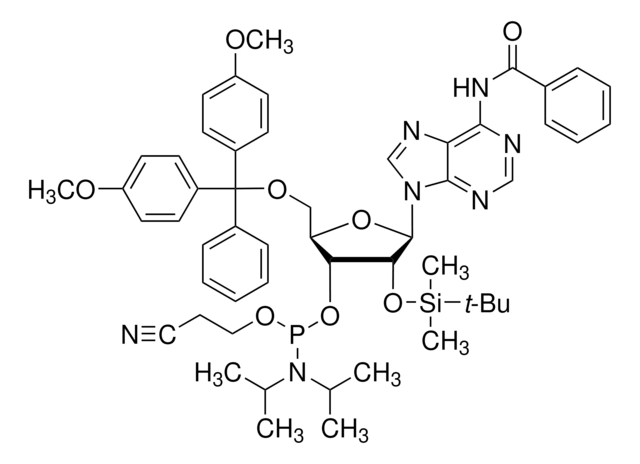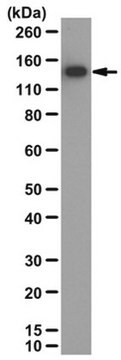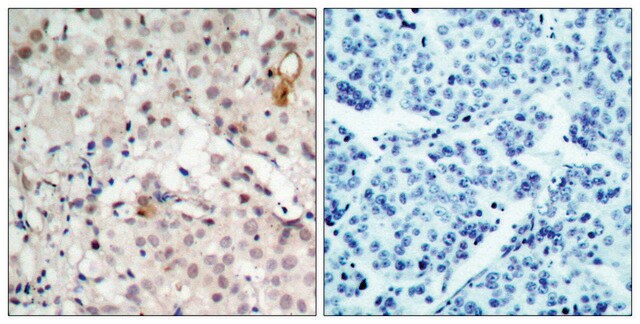MABS522
Anti-PIKFYVE Antibody, clone R159.4.3C9
clone R159.4.3C9, from mouse
Synonim(y):
1-phosphatidylinositol 3-phosphate 5-kinase, Epididymis luminal protein 37, FYVE finger-containing phosphoinositide kinase, PIKfyve, Phosphatidylinositol 3-phosphate 5-kinase type III, PIPkin-III, Type III PIP kinase, Zinc finger FYVE domain containing 2
About This Item
Polecane produkty
pochodzenie biologiczne
mouse
Poziom jakości
forma przeciwciała
purified immunoglobulin
rodzaj przeciwciała
primary antibodies
klon
R159.4.3C9, monoclonal
reaktywność gatunkowa
human
metody
western blot: suitable
izotyp
IgG2aκ
numer dostępu NCBI
numer dostępu UniProt
Warunki transportu
wet ice
docelowa modyfikacja potranslacyjna
unmodified
informacje o genach
human ... PIKFYVE(200576)
Opis ogólny
Specyficzność
Immunogen
Zastosowanie
Signaling
General Post-translation Modification
Jakość
Western Blotting Analysis: 2.0 µg/mL of this antibody detected PIKFYVE in 20 µg of HL-60 cell lysate.
Opis wartości docelowych
Postać fizyczna
Przechowywanie i stabilność
Inne uwagi
Oświadczenie o zrzeczeniu się odpowiedzialności
Nie możesz znaleźć właściwego produktu?
Wypróbuj nasz Narzędzie selektora produktów.
Kod klasy składowania
12 - Non Combustible Liquids
Klasa zagrożenia wodnego (WGK)
WGK 1
Temperatura zapłonu (°F)
Not applicable
Temperatura zapłonu (°C)
Not applicable
Certyfikaty analizy (CoA)
Poszukaj Certyfikaty analizy (CoA), wpisując numer partii/serii produktów. Numery serii i partii można znaleźć na etykiecie produktu po słowach „seria” lub „partia”.
Masz już ten produkt?
Dokumenty związane z niedawno zakupionymi produktami zostały zamieszczone w Bibliotece dokumentów.
Nasz zespół naukowców ma doświadczenie we wszystkich obszarach badań, w tym w naukach przyrodniczych, materiałoznawstwie, syntezie chemicznej, chromatografii, analityce i wielu innych dziedzinach.
Skontaktuj się z zespołem ds. pomocy technicznej








